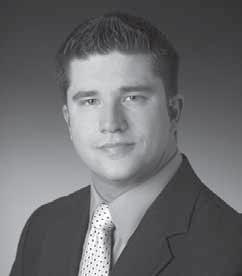
By Stephen Kyne
Saving for retirement – as important as we all
know it is – isn’t always easy. For most people
there are bills to pay, children to educate, and
businesses to manage – expensive undertakings
that often relegate saving for retirement to the
back burner.
Unfortunately, by the time many people are
finally in a position to start putting substantial
money aside for retirement, federal tax law limits
the amounts they are able to defer into 401(k)
and other retirement savings plans.
If you are a small business owner, professional,
independent contractor, or anyone
who is in your peak earning years, you may be
experiencing the frustration of finally having the
money, but essentially being unable to save for
the kind of retirement you want. A large chunk
of your income must be paid in taxes and many
tax-qualified retirement plans have an annual
cap on the contributions they allow you to make.
Or they are so complex they require you to have an enrolled actuary under contract to make sure you are in compliance with IRS regulations. As a result, you are not saving enough – right now, while you can – to achieve your retirement goals. And that has to be a cause for concern.
There is a simple solution to this problem. It is called a 412(e)(3) Defined Benefit Plan.
Section 412 of the Internal Revenue Code contains complex funding rules that apply to all defined benefit plans – except those that fall under subsection 412(e)(3). Those plans are funded solely by individual life insurance and annuity contracts (or only annuity contracts), and the amount you pay into the plan each year is the amount of contribution that will guarantee the plan benefits. As a result, your plan contribution can be much more than the $51,000 cap imposed by traditional retirement plans.
Look at some of the benefits offered by 412(e) (3) plans:
You can set aside substantial amounts of money – sometimes upwards of $200,000 or more each year.
All the plan benefits are completely guaranteed (made available through the use of annuity and life insurance contracts and are dependent upon the claims-paying ability of the issuing company).
Your earnings will accumulate in the plan on a tax-deferred basis.
Plan assets may be protected from lawsuits, creditors, and other risks.
Because of its unique design, you can’t over-fund or under-fund a 412(e)(3) plan. And because the plan is IRS-approved, you won’t need an enrolled actuary’s certification each year, potentially lowering plan administration costs. There is, however, a basic requirement that you need to be aware of:
• 412(e)(3) plans must be funded exclusively through fixed insurance and/or annuity contracts in order for all benefits to be guaranteed.
• 412(e)(3) plans work best for high net worth individuals, businesses that are established and highly profitable, businesses with fewer than five employees, and businesses with owners who are at least 50 years old, within 10 years of retirement and older than the firm’s other employees.
The bottom line: if you’re one of the growing number of people who, for whatever reason, need to start saving a large amount of money for retirement in as short a time as possible; if you’re a business owner looking for a unique way to reward yourself and your employees; and if you’re looking for substantial relief from income taxes; you owe it to yourself to find out more about 412(e)(3).
Stephen Kyne is a partner at Sterling Manor Financial LLC.
